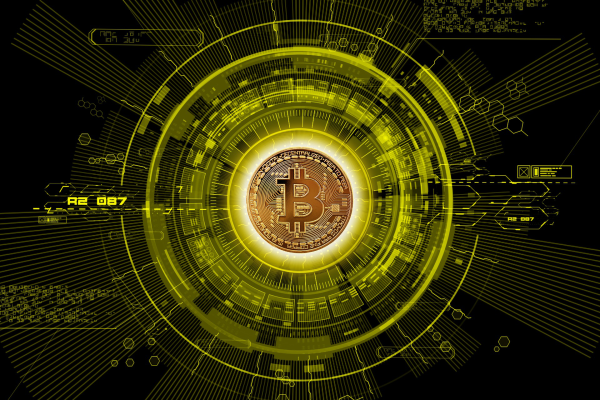Why stablecoins can't solve all of cryptocurrency's problems
6/5/2022, 06:59 PM

to grow.
In the wake of the collapse of one of the world’s biggest so-called stablecoins, people are asking the wrong questions.
Stablecoins are touted as the safer part of the crypto market, designed to hold a constant value per coin of $1. But it did not work out that way for the recently stricken terraUSD. Its dramatic failure has raised questions about which kinds of stablecoins are the most stable, and about what guardrails are needed to protect users.
These are not the questions we should be asking, though. The real question is: “Should stablecoins even exist?” Yes, terraUSD had a more fragile structure than some other stablecoins. It was a so-called “algorithmic” stablecoin that sought to maintain a $1 value through a complex relationship with a paired cryptocurrency, luna. Last week, terraUSD plunged in value to under 10 cents as demand for both nosedived.
However, terraUSD’s idiosyncrasies do not mean that other forms of stablecoins are actually stable, nor that there is a place for stablecoins in our financial system.
We often hear that stablecoins are the future of payments, but they aren’t really used to pay for real-world goods and services. We are told by supporters that “it’s early days”, but what could stablecoins ever do that non-blockchain-based payments solutions couldn’t do better? Blockchain technology needs to involve wasteful computations in order to discourage attacks, so it does not scale well. In addition, blockchains can have data added but not deleted from them, which prevents the reversal of mistaken or fraudulent transactions. It’s hard to see how blockchain payments could ever be faster or more efficient than more centralised alternatives.
Crypto lobbyists may say that these technological limitations are worth it because they get rid of centralised intermediaries. In reality, though, crypto is rife with intermediaries. The biggest stablecoins, tether and USDC, are both issued by centralised intermediaries. TerraUSD claimed to be decentralised, but when things started to unravel, holders looked to the Twitter feed of co-founder Do Kwon — who was clearly calling the shots.
And let’s not forget that to buy stablecoins or convert them back into fiat currency, most users will rely on an exchange, such as the Bitfinex and Coinbase exchanges that are affiliated with tether and USDC, respectively. (The biggest stablecoins are affiliated with the biggest exchanges, which profit from the associated transaction fees).
In sum, stablecoins start with a convoluted and inefficient base technology in order to avoid intermediaries, and then add intermediaries (often with apparent conflicts of interest) back in.
And then there are the negative impacts on those of us who don’t even use stablecoins: the environmental costs of blockchain transactions; ransomware attacks; and the risk of future financial instability caused by stablecoin runs if the sector continues to grow.
Professor of law at the American University Washington College of Law, Michael Froomkin, argues that we should not be asking whether stablecoins are the most stable, but whether they should exist at all.
In the wake of the collapse of one of the world’s biggest so-called stablecoins, people are asking the wrong questions.
Stablecoins are touted as the safer part of the crypto market, designed to hold a constant value per coin of $1. But it did not work out that way for the recently stricken terraUSD. Its dramatic failure has raised questions about which kinds of stablecoins are the most stable, and about what guardrails are needed to protect users.
These are not the questions we should be asking, though. The real question is: “Should stablecoins even exist?” Yes, terraUSD had a more fragile structure than some other stablecoins. It was a so-called “algorithmic” stablecoin that sought to maintain a $1 value through a complex relationship with a paired cryptocurrency, luna. Last week, terraUSD plunged in value to under 10 cents as demand for both nosedived.
However, terraUSD’s idiosyncrasies do not mean that other forms of stablecoins are actually stable, nor that there is a place for stablecoins in our financial system.
We often hear that stablecoins are the future of payments, but they aren’t really used to pay for real-world goods and services. We are told by supporters that “it’s early days”, but what could stablecoins ever do that non-blockchain-based payments solutions couldn’t do better? Blockchain technology needs to involve wasteful computations in order to discourage attacks, so it does not scale well. In addition, blockchains can have data added but not deleted from them, which prevents the reversal of mistaken or fraudulent transactions. It’s hard to see how blockchain payments could ever be faster or more efficient than more centralised alternatives.
Crypto lobbyists may say that these technological limitations are worth it because they get rid of centralised intermediaries. In reality, though, crypto is rife with intermediaries. The biggest stablecoins, tether and USDC, are both issued by centralised intermediaries. TerraUSD claimed to be decentralised, but when things started to unravel, holders looked to the Twitter feed of co-founder Do Kwon — who was clearly calling the shots.
And let’s not forget that to buy stablecoins or convert them back into fiat currency, most users will rely on an exchange, such as the Bitfinex and Coinbase exchanges that are affiliated with tether and USDC, respectively. (The biggest stablecoins are affiliated with the biggest exchanges, which profit from the associated transaction fees).
In sum, stablecoins start with a convoluted and inefficient base technology in order to avoid intermediaries, and then add intermediaries (often with apparent conflicts of interest) back in.
And then there are the negative impacts on those of us who don’t even use stablecoins: the environmental costs of blockchain transactions; ransomware attacks; and the risk of future financial instability caused by stablecoin runs if the sector continues to grow.
Professor of law at the American University Washington College of Law, Michael Froomkin, argues that we should not be asking whether stablecoins are the most stable, but whether they should exist at all.